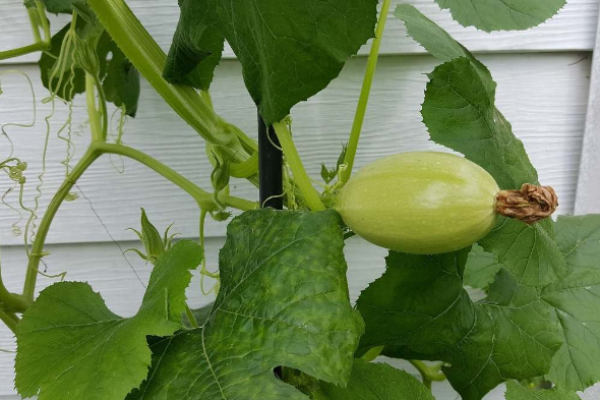Squash Plant Diseases, Pests and Control Methods
Squash Plant Diseases, Pests and Control Methods

Introductionm to squash plant pests, diseases, and control: Growing Squash plants is very easy and fun. Squashes include both winter and summer Squash types. Due to soft and succulent natures, they are vulnerable to a range of Squash diseases that need treatment and care. Squash plants produce yellow or orange color flowers and green, white or yellow fruit in a variety of shapes and sizes with smooth or ridged skin.
A guide to squash plant diseases, pests
Squash is divided into two categories;
- Summer Squash
- Winter Squash
Summer Squash plant grows quickly in about 60 days and harvested throughout the summer while still young. Their skins are thin and tender and tend to be prolific producers. Zucchini is the most common summer Squash plant and pattypan is another equally tasty variety. Summer varieties of Squash are very large and bushy.
Winter Squash grow slowly (80 to 110 days) and often mature to a rich color before harvest. Their skins are thicker and protective, making them last longer in storage. Well-known winter Squashes consist of pumpkin, Hubbard, and butternut.
- Different kinds of bugs attack Squash plants
- Best time to plant Squash
- Conditions for growing Squash plants
- Does neem oil get rid of squash bugs
- Pests and diseases in Squash
You can apply this pests and diseases information for growing Squash in pots, growing Squash from seed, growing Squash from seed indoors, growing Squash on the terrace, growing Squash in the backyard, growing Squash in the greenhouse, growing Squash in raised beds, growing Squash in the balcony, growing Squash outdoors, and growing Squash in containers vertically.
Requirements for growing squash
Squash requires lots of sunlight and good drainage to develop optimally and growing best at temperatures between 18 and 25°C (65–75°F). Squash will yield best if grown in fertile, well-draining soil, rich in organic matter and with a pH level between 6.5 and 7.5. Squash must be planted in full sun and provided with ample soil moisture due to its shallow root system.
The Squash planting site needs to receive full sun; the soil must be moist and well-drained, but not soggy. Squash can be sown directly into the garden. Summer Squash and Winter Squash are commonly planted in hills about 1 inch deep. Sow seeds after any danger of frost have ended and the soil has warmed. Usually, 4 to 5 seeds per hill are plenty, thinning down to 2 or 3 plants per hill once the seedlings have developed their true leaves. Hills and rows of summer Squash must be approximately 3 to 4 feet apart while winter Squash should be spaced about 4 to 5 feet apart with 5 to 7 feet between rows and with the hills spaced 3 feet apart.
Squash plants need one inch of water per week. To put that into perspective, you’ll want to water mature Squash plants once a week so the soil is moist 8 to 12 inches beneath the surface.
Squash plants can be started indoors 3 to 4 weeks before the planting date. Start seeds in peat pots but be sure the seedlings do not suffer root disturbances during transplanting. And you can plant 3 to 4 seeds per pot and thin to 2 plants later. Harvesting Squash is ready to harvest stage when the rind is hard and cannot be punctured with a fingernail. The skin of mature fruits is dull and dry in appearance, particularly when compared with the shiny skin of immature fruit.
Common pests, diseases effects and their control in Squash plants
Squash vine borers
Squash vine borers tunnel through the stems of Squash plants, depriving the plant leaves and fruit of moisture. Squash vine borer moths hatch out of overwintering cocoons in the soil. These red bodied, wasp-like moths lay reddish-brown color eggs around the stem close to the soil line. Deter moths by covering the base of the stems near the ground with soil, mulch, foil, and fabric material. You can inject the stem with Bacillus thuringiensis (Bt) to kill the larvae, or by using a sanitized knife to cut above the entry hole, remove the larvae.
Squash End Rot
One of the most common diseases in the Squash plant is the Squash end rot. This is a calcium deficiency disease that causes blossom end rot in tomatoes. Too little calcium causes the Squash plant problems in building fruit cells. As a result, the bottom of the Squash fruit often does not get enough calcium. This problem doesn’t appear until the fruit becomes larger. Prevention is better than cure, and the only real solution is to remove the rotting fruit and add a calcium-rich supplement to the Squash plant. New fruit must begin to grow shorter and the plant should now have enough calcium to prevent Squash rot from forming.
Aphids
Another common garden pest that can feast on Squash is the lowly aphid. In many cases, aphids will damage a handful of plants before becoming a meal for beneficial insects such as ladybugs and wasps. Neem oil is effective at controlling aphids when applied according to product instructions.
Squash bugs and cucumber beetles
Like other Squash plant varieties, crookneck Squash will most likely be plagued with Squash bugs. Squash bugs can quickly take over the Squash plant affect fruit set and quality. They feed on plants by piercing the leaves and stem with their mouthparts causing wilting even when well-watered.
Generally, cucumber beetles are smaller than Squash bugs. They are yellow and black with stripes or spots like a ladybug. These pests are vectors for many diseases we will talk about so controlling pests is the best way to prevent fatal infections in your plants. Controlling Squash bugs without using pesticides is the difficult aspect of growing crookneck Squash. Cucumber beetles look like ladybugs but are yellow with black dots or yellow with black stripes. Both beetles spread diseases like bacterial wilt and controlled as soon as possible.
Tips to Control Squash bugs
Attempts at preventing Squash bugs seem to work best if treatment takes place when the plants are young and when they are flowering. Early detection of Squash bug nymphs is important. Once you have a big infestation of adults, they can be difficult to kill.
Garden Cleanliness
The adult Squash bugs are attracted by garden refuse. Remove vines, leaves and plant debris in the last fall and then destroy it. This will ensure that there will not be areas in the garden that attract the bugs when it is time to plant your garden. Time spent cleaning away vines and dead plants in fall will reward you with fewer disease problems next year. Garden refuse can be recycled in a compost pile, but don’t have it too close to the areas where you will be planting your Squash. Don’t compost dead plants in the fall. Those little pests tend to overwinter and cause trouble all over again the next growing season.
Practice crop rotation
Many garden problems occur when you plant the vegetables in your garden in the same spot each year. Instead, rotate the crops, so that the bugs and diseases don’t get a chance to take hold.
Leaf-footed bugs
Leaf-footed bugs will feed on Squash plants. They are just about as bad as Squash bugs or maybe worse as they seem to feed on all sorts of veggies. Controlling leaf-footed bugs in Squash plants is no different from Squash bug control.
Squash vine borers
The Squash vine borer is also another pest that can kill young Squash plants. These caterpillars live in the soil and bore into the stalk of Squash plants causing it to wilt and die. To prevent Squash vine borers, you can wrap the stem of young plants with aluminum foil, plastic cups, or another type of barrier to prevent access to the base of your plant.
Powdery mildew of Squash plant diseases
If you notice your Squash plants are wilting and have a thin white film growing on the surface of the leaves, then you have powdery mildew. Powdery mildew is a fungal infection that can overwhelm and kill your Squash plant by blocking out sunlight. Powdery mildew shows up in the hot dry periods of summer and will affect pumpkins and cucumbers. The white powdery growth of the fungus will appear on all parts of the Squash plant, and leaves will begin to turn yellow. It is easiest to prevent powdery mildew by not crowding your plants and applying horticultural oil like neem oil. Neem oil treatments can help treat mild and early powdery mildew infections.
Downy mildew of Squash plant diseases
Downy mildew is a different fungal disease of the Squash plant that causes a velvety type growth on the undersides of the leaves. It does not have the white appearance that powdery mildew does, but has a fluffy, grey-colored growth. Downy mildew causes brown and yellow spotting on the leaves that appear similar to mosaic viral infections. In contrast to powdery mildew, downy mildew prefers a cool and wet environment. Though, you can have both types of mildew affecting your plants at the same time. The best practice for preventing mildew infections in the Squash plant is the application of Neem oil every 7 to 10 days. It’s important to repeat the treatments as they do not have a long residual effect.
Organic pest control options for Squash plants
Row covers
Row covers are a good way to prevent an infestation with Squash bugs, but you’ll want to cover your plants as soon as you put them out. Plus you’ll be hand-pollinating flowers as the covers prevent good bugs from getting in as well.
Insecticidal soaps
Insecticidal soaps can be effective if applied correctly. To obtain the most benefit, spray as it cools down in the evening. This is when Squash bugs are active and pollinators are less active. Insecticidal soaps need to coat the Squash bugs to be effective. During the day, the bugs hide in the debris under the plant so spraying during this time is not the best use of time. Don’t spray the top of your Squash plant; make sure you’re coating the undersides of plant leaves and around the base of the plant.
Hand-picking
Hand-picking and squishing the Squash bug eggs is one of the good ways to control Squash bug numbers. Scrape, squish, or remove the seeds with duct tape when you discover them. Stomp, smush, or drown adults as catch them. Be aware that they stink to high heaven when killed.
Companion planting
It can be beneficial to plant certain flowers and veggies with Squash plants to encourage beneficial insects and possibly repel pests. Flowers such as nasturtium and marigold are said to repel Squash bugs and beetles.
Simple growing strategies for Squash plants
Squash plant growing success will come with a few simple growing strategies;
Plant several Squash plants – This will ensure at least one is successful and survives pests and diseases in plants. Stagger planting times or plant seeds and transplants at the same time for the continuous harvest.
Give Squash space recommended – Check spacing requirements for each plant variety you grow. If the garden is tight, contain the plant by pinching out the plant growing tips after a vine has set a few fruits. Don’t grow Squash plants too close together; this will help deter pests and diseases.
Pick Squash at the correct time – Pick summer Squashes when they are young. Let winter Squashes mature until their rinds are dull and hard. Pick any fruit that is discolored or rotting before other plants or fruits are affected.
Posted
2 years ago
No comments yet! Why don't you be the first?










Add a comment